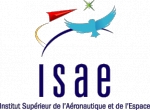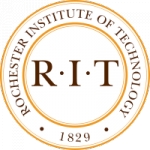Displaying items by tag: education
Lunabotics Mining Competition
NASA's Annual Lunabotics Mining Competition is a university-level competition designed to engage and retain students in science, technology, engineering and mathematics (STEM).
NASA will directly benefit from the competition by encouraging the development of innovative lunar excavation concepts from universities which may result in clever ideas and solutions which could be applied to an actual lunar excavation device or payload. The challenge is for students to design and build an excavator, called a Lunabot, that can mine and deposit a minimum of 10 kilograms of lunar simulant within 10 minutes. The complexities of the challenge include the abrasive characteristics of the BP-1, the weight and size limitations of the Lunabot, and the ability to telerobotically or autonomously control the Lunabot from a remote mission control center. This year the scoring for the mining category will not be based primarily on the amount of material excavated in the allowed time but instead will require teams to consider a number of design and operation factors such as dust tolerance and projection, communications, vehicle mass, energy/power required, and full autonomy.
BLUEsat
BLUEsat, an acronym of Basic Low-Earth-orbit University of NSW Experimental satellite, is a digital amateur radio satellite being designed and built solely by students here at the University of NSW.
The satellite is a small cube measuring approximately 260mm on each side, excluding antennae, and weighs around 14kg. Powered by fixed solar panels on each face, it will carry a flight computer, radio transmitters and receivers, a power-control system, battery packs for when its orbit places it in the Earth's shadow, magnets to passively stabilise the satellite and align it with the Earth's magnetic field, and will be controlled via a dedicated communications groundstation here at UNSW. BLUEsat will be placed in an approximately circular orbit at an altitude of around 750km that will take it over the poles. At this altitude, the satellite will travel around the Earth at a rate of around once every 90 minutes.
BLUEsat is primarily an educational satellite, designed to give students at UNSW space experience which they could not obtain elsewhere.
Institute for Global Environmental Strategies (IGES)
The Institute for Global Environmental Strategies (IGES) is an American organisation dedicated to Earth & space science education. It is fostering national & international cooperation in global Earth observations.
Institut Supérieur de l'Aéronautique et de l'Espace (ISAE)
The Institut Supérieur de l'Aéronautique et de l'Espace or ISAE is the name for the French aerospace engineering school.
It is located in Toulouse, France. The "Institut Supérieur de l’Aéronautique et de l’Espace" (ISAE) was created in 2007 from the merger of two prestigious French Engineer School: SUPAERO (founded in 1909) and ENSICA (founded in 1945).
The Institute provides high-level Graduate Programs in engineering for Space and Aerospace domains, Master’s degrees, Postgraduate Specialized Masters, PhD degrees. This opens to the students a wide range of career opportunities: engineering, research and development, logistics, consulting, finance, etc.
ISAE also develops a very active research policy.
Faulkes Telescope Project
The Faulkes Telescope Project (FTP) is supported by the Dill Faulkes Educational Trust. It provides access to 1,500 hours of observing time on two 2-metre class telescopes located in Hawaii (Faulkes Telescope North in Hawaii) and Australia (Faulkes Telescope South in Australia). This time is dedicated to education and public outreach, mainly in the UK, but also for smaller, selected projects in Europe and the US.
FTP has operated a UK-wide educational programme since 2004, and currently works with science education projects across Europe and further afield (e.g. USA, Russia, Israel), including many EU-based science, maths and ICT programmes. FTP specialises in providing physics and maths education and outreach via astronomy and space science, utilising the unique access it can provide to research-grade facilities. The basic philosophy is to engage learners in “real science”, making them active participants in a range of astronomical research projects, ranging from observations of the solar system to distant galaxies. Teacher training (both face-to-face and online) is a core component of the FTP educational philosophy, and project staff have been involved in professional development work both in the UK and overseas, with teacher training days being held in Moscow, Santa Barbara, Munich, Lisbon, Paris and several other venues in Portugal and Spain.
FTP operates a broad range of educational programmes, with a strong emphasis on teacher training and engaging students with “real science”. A variety of research projects are currently being run on the FTs, with schools often participating in the role of data gatherers, particularly in long-term monitoring or short-term intensive studies or Target of Opportunity requests for transient objects (e.g. GRBs, supernovae, NEOs or X-ray systems in outburst).
The project also provides extensive educational materials which can be accessed and downloaded free of charge from their educational resources website. These resources include astronomy video tutorials, online astronomy training, paper-based documents for use in the classroom, and pre-packaged data from the telescopes to use with the exercises detailed online.
John D. Odegard School of Aerospace Sciences (UND Aerospace)
The John D. Odegard School Of Aerospace Sciences at the University of North Dakota (UND) is a center for aerospace learning, with achievements in collegiate aviation education, atmospheric research, and space studies. It gathers over 500 faculty and staff members, over 1,500 students from around the world, and a myriad of programs and projects.
At UND Aerospace, Department of Space Studies, the space studies provides the student with the broader background necessary to understand the linkages between engineering, space science, and policy.
Rochester Institute of Technology (RIT)
Rochester Institute of Technology (RIT) is a private university located within the town of Henrietta in the Rochester, New York metropolitan area.
RIT is composed of nine academic colleges. It is widely known for its fine arts, computing, engineering, and imaging science programs.
RIT has collaborated with many industry players in the field of research as well, including IBM, Xerox, NASA, and the Defense Advanced Research Projects Agency (DARPA).
National Space Society (NSS)
The National Space Society (NSS) is an American independent, educational, grassroots, non-profit organization dedicated to the creation of a spacefaring civilization. Founded as the National Space Institute (1974) and L5 Society (1975), which merged to form NSS in 1987 (seemerger proclamation), NSS is widely acknowledged as the preeminent citizen's voice on space.
NSS has over 12 thousand members (and more supporters) and over 50 chapters in the United States and around the world. The society also publishes Ad Astra magazine, an award-winning periodical chronicling the important developments in space.









